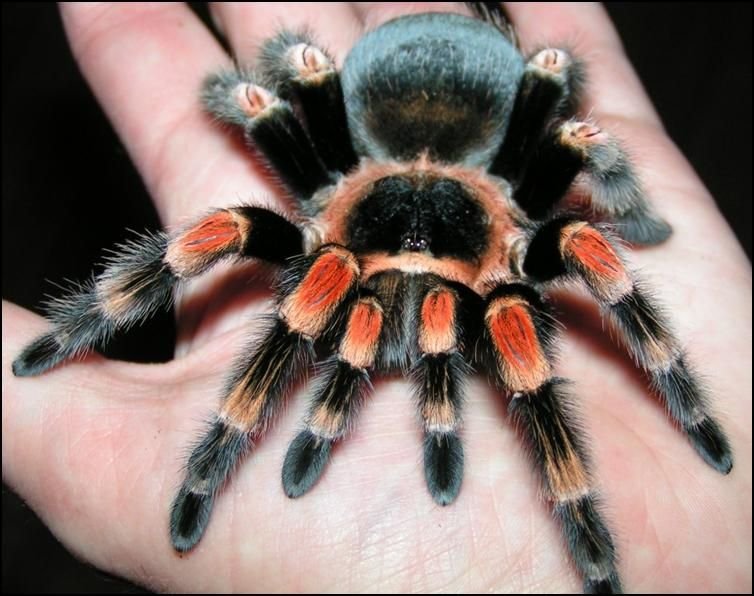
Let’s break it down like we’re chatting over coffee. Think of the Mexican Redknee Tarantula as a quirky, spiky cousin of a fluffy kitten. They’re intriguing, but you’ve really got to know how to approach them carefully. Understanding their temperament, needs, and safety measures goes a long way in making sure both you and your pet have a smooth time together.
Now, let’s embark on this journey to discover whether handling a Mexican Redknee Tarantula is a safe practice, what you need to know, and how to enjoy this unique relationship without any scares.
Understanding the Mexican Redknee Tarantula
The Mexican Redknee Tarantula, scientifically known as *Brachypelma smithi*, is one of the most popular tarantula species among pet owners. With its striking red-orange coloration on the knees and black body, it’s quite the charmer. They’re typically docile compared to other tarantulas, which makes them a go-to for beginners.
You might be wondering about their size. Adult Mexican Redknees can grow up to 5-7 inches in leg span. With that size comes some responsibility. They live for quite a while, usually around 15-20 years, so you’ll want to ensure you’re ready for a long-term commitment.
In the wild, these tarantulas can be found scurrying around the arid areas of Mexico. Their ability to adapt to their surroundings makes them resilient. However, if you’re thinking about keeping one as a pet, it’s crucial to recreate a suitable habitat for them to thrive in captivity.
What Makes Them Safe to Handle?
So, what’s the scoop on handling a Mexican Redknee Tarantula? Honestly, they are considered one of the safer spider species to handle. Their docile nature and relatively calm demeanor mean they’re not usually prone to biting unless they feel threatened. Here’s the thing: just because they’re generally chill, that doesn’t mean you should treat them like a soft toy.
Handling your tarantula should be a careful affair. When you do decide to interact with your new pet, make sure to create a stress-free environment. Start by letting them acclimate to their new home for a few days before you pick them up. You don’t want to end up with a stressed-out spider on your hands!
If you’re ready to give it a go, always remember to approach your tarantula slowly and gently. Offer your hand from the side so they can crawl onto you, allowing them to feel the movement. This is a stress-free way for them to make the choice to interact.
Handling Safety Tips
If you’re set on handling your Mexican Redknee Tarantula, a few tips can help make the experience enjoyable and safe.
- Wash your hands: Before handling, give your hands a wash to remove any scents or residues. This is especially important for their sensitive chemoreceptors.
- Choose a calm environment: Make sure you’re in a quiet space without distractions. This helps keep your tarantula calm.
- Be mindful of drops: Tarantulas are delicate. If you drop them, it might injure them. Always handle them close to a soft surface, like a bed or a couch.
- Limit handling time: Keep sessions short and sweet. Ten minutes is usually enough to get acquainted without overwhelming them.
It’s good to remember that some people might prefer to view their tarantula without handling them. Each spider has its own personality, and if yours seems skittish, it’s okay to admire from a distance!
Signs of Stress in Your Tarantula
Here’s where it gets important: knowing when your Mexican Redknee Tarantula is feeling stressed is crucial for both your safety and theirs. Just like us, these little guys have their ways of showing discomfort.
For example, if they suddenly flip onto their back or kick hairs from their abdomen, that’s a pretty clear signal they’re not thrilled. Kicking hairs can irritate skin and eyes, so it’s best to take this as your cue to give them some space.
Another sign of stress is rapid movement or trying to escape their enclosure. If you see them darting around, it’s a good idea to let them be. Avoid handling them during these moments—your safety (and theirs) comes first.
Alternatives to Handling
If handling your Mexican Redknee Tarantula isn’t your thing, or if your spider just doesn’t seem up for it, that’s totally fine! There are many other ways to bond with your pet without picking them up.
Consider setting up a viewing area in your home where you can watch them move about. Tarantulas can be fascinating to observe as they explore their environment, hunt for food, or simply relax. You might even enjoy creating a beautiful terrarium that mimics their natural habitat—this can help them feel more at home and allow you to appreciate their beauty from a distance.
Also, engaging with them during feeding time can be a fun alternative. Watching them eat not only helps you learn more about their behavior but also strengthens your bond.
Final Thoughts on Handling Your Mexican Redknee Tarantula
In conclusion, handling a Mexican Redknee Tarantula can be safe, provided you follow the right steps and approach carefully. With their docile nature and unique characteristics, they can be amazing companions for those ready to embrace something a bit out of the ordinary.
Remember, while they’re not dangerous, they do require respect and understanding. Be observant, take your time, and listen to your spider’s cues. Not everyone will want to handle them, but that’s okay! The joy of owning a Mexican Redknee Tarantula can come from simply appreciating its beauty and behavior.
So, whether you decide to cuddle up with your new pet or simply admire them from afar, enjoy the journey. After all, every interaction with these fascinating creatures can teach you something new about nature and yourself!

